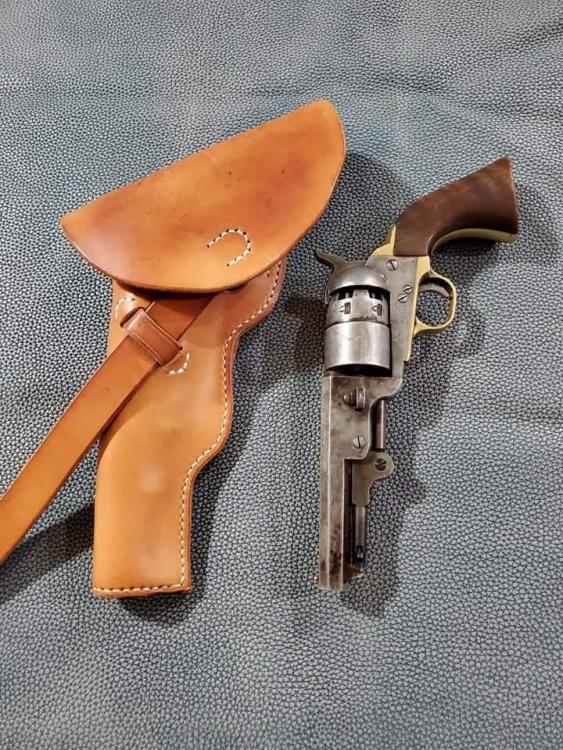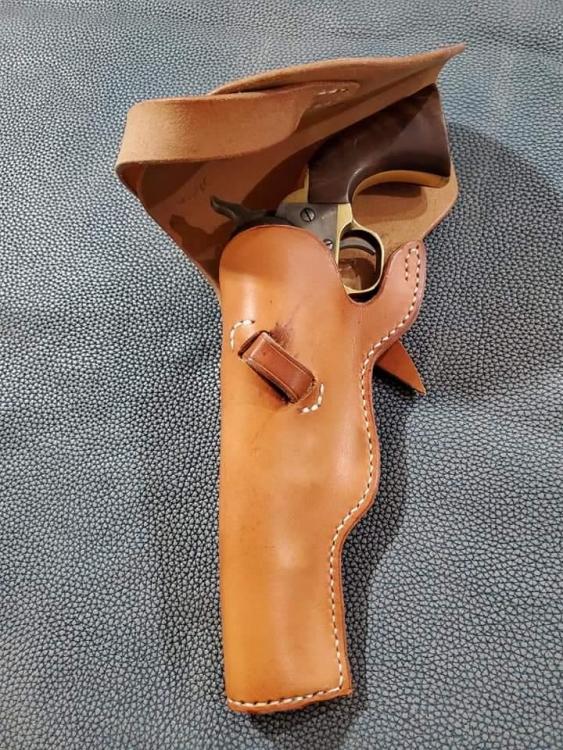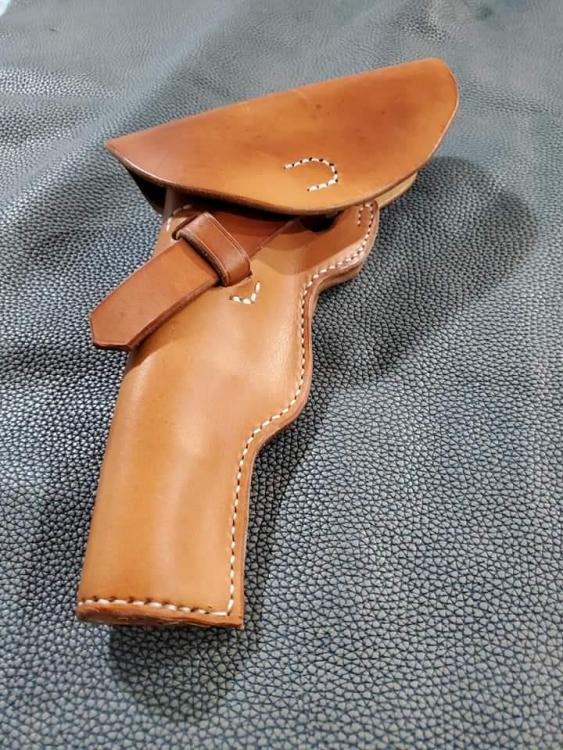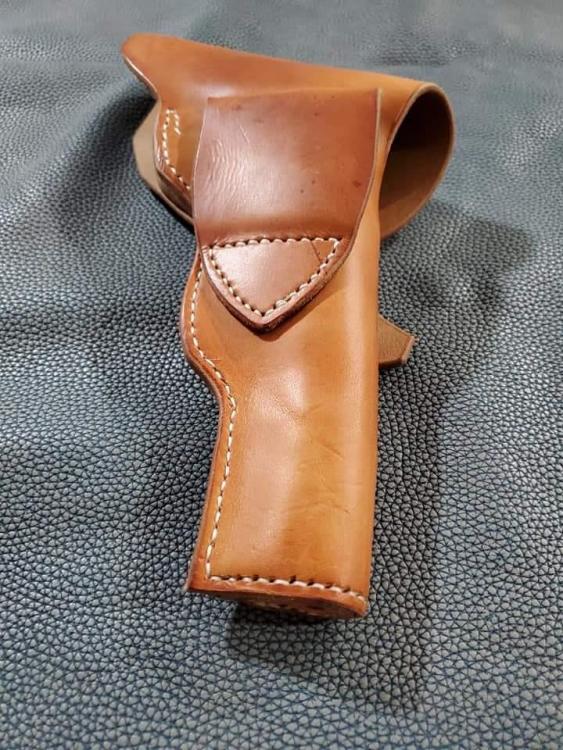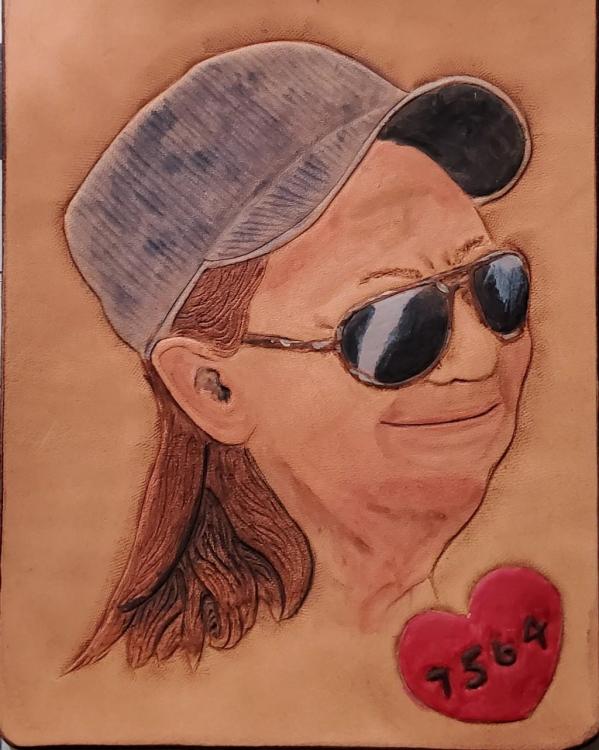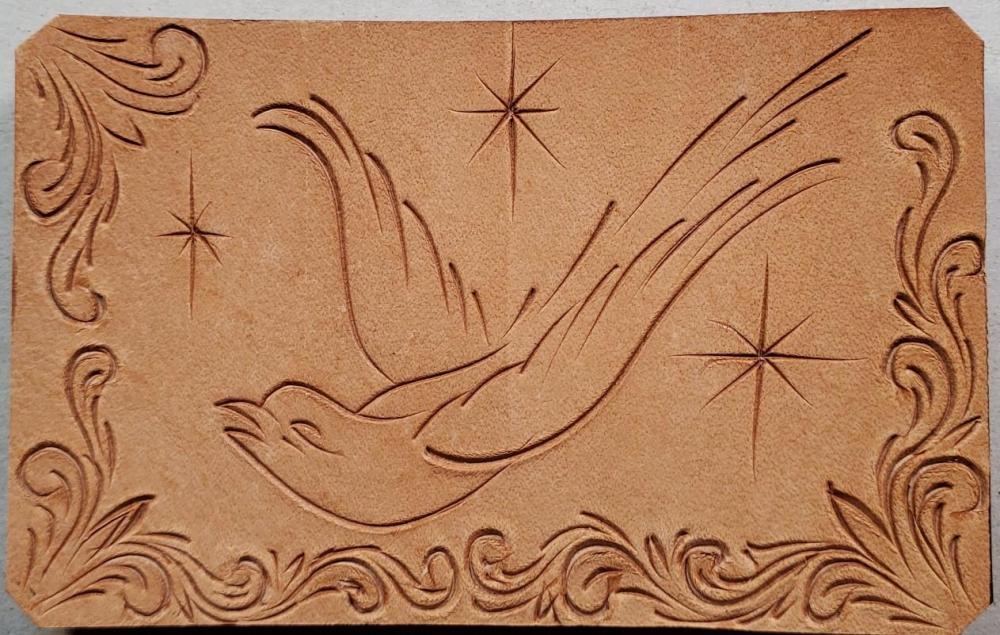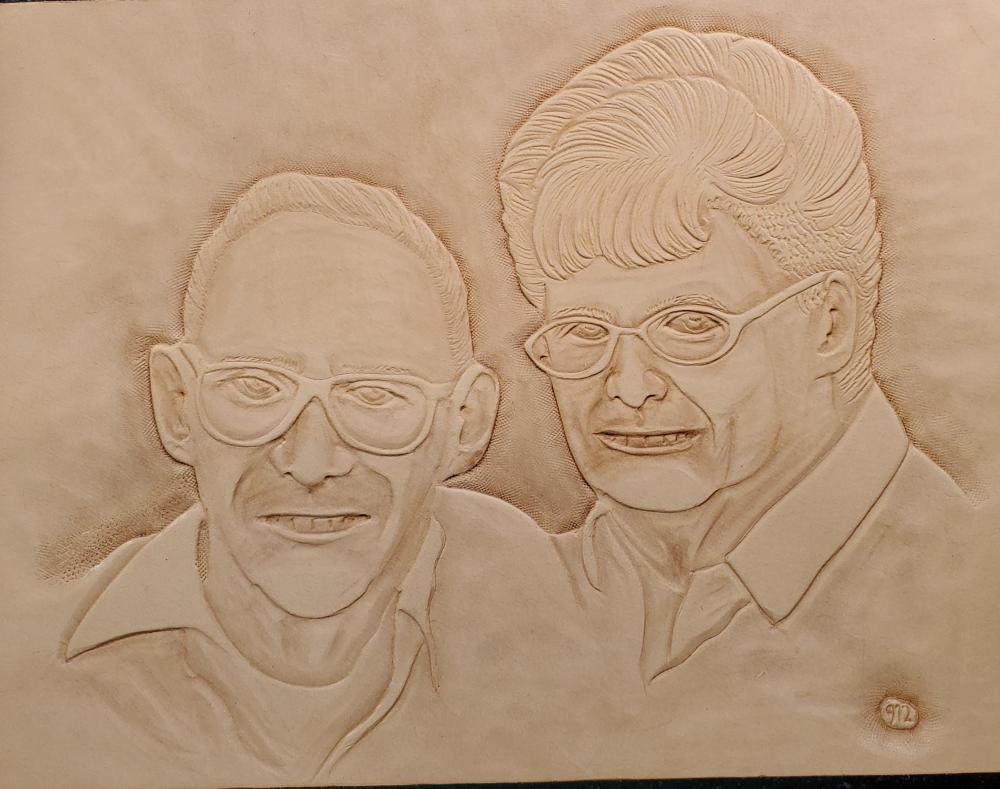-
Posts
1,431 -
Joined
-
Last visited
Content Type
Profiles
Forums
Events
Blogs
Gallery
Everything posted by Stetson912
-
This was one I remember. The principals will get you close I think
-
Go look on YouTube for Sam Andrew's. He has a few holster making videos that may help make a pattern. Also JLS leather website has some pattern making pdfs that are good. And if you look on this forum there was one or 2 pinned tutorials on holster making that were very good also
-
I made this holster for my uncle. He carries a pistol that resembles an 1851 navy but is kind of an odd duck. It's a different caliber and has longer barrel than the original navy. Anyhow, he wanted a flap holster, and never have making one before I decided why not. I made it based off examples in Packing Iron. Thanks for checking it out
-
Thank you kindly, I hope it is received well and my intentions are understood. These are the types of projects most worth doing for me and they seldom come across so I try and do them when they present themselves.
- 4 replies
-
- figure carving
- portrait
-
(and 1 more)
Tagged with:
-
Thanks, the number in the heart was her drag car number, they are a racing family also
- 4 replies
-
- figure carving
- portrait
-
(and 1 more)
Tagged with:
-
Here's a portrait of my best friends mom. She passed from cancer a few years ago and I thought he might like this for his birthday this week.
- 4 replies
-
- figure carving
- portrait
-
(and 1 more)
Tagged with:
-
Annie libertini has a great portrait carving series at elktracks studio. Its a little pricy for all 5 but, it is worth it in my opinion. Just a thought for you. Thanks for the kind words
- 9 replies
-
- figure carving
- portrait
-
(and 1 more)
Tagged with:
-
Thank you
- 9 replies
-
- figure carving
- portrait
-
(and 1 more)
Tagged with:
-
Thanks, it was a challenge for sure but the whole project was fun to do
- 9 replies
-
- figure carving
- portrait
-
(and 1 more)
Tagged with:
-
Thank you
- 9 replies
-
- figure carving
- portrait
-
(and 1 more)
Tagged with:
-
Hey everyone, I've posted the carving in the figure carving area. This is the completed colored portrait. It is of my grandparents and will be sent to my dad for Christmas. Anywho, im always open to critique and I hope you enjoy it.
- 9 replies
-
- figure carving
- portrait
-
(and 1 more)
Tagged with:
-

New member saying hi
Stetson912 replied to PhilDimashq's topic in Purses, Wallets, Belts and Miscellaneous Pocket Items
Looks like solid work. I commend your stitching, for only doing this for 7 months its great. That is a tough aspect of leathercraft -

Deluxe Set of six (6) Leather Round Coasters Basket Stamp with Holder
Stetson912 replied to Adonis's topic in Art
Came out nice -
Its tricky. There is a way to calculate the needed spacing. But in the end you'll still have fewer stitches on the bottom than the side. This means you'll need to double up on a few hols on the bottom by stitching through them twice. Its hard to explain without a graphic. All said though, you did a fine job
-
This bird is an example of copying i referred to. The rest was on the spot freehand work. This piece was rather small for me so, a lot of the scrollwork got away from me a bit and wasn't well thought out, but I think it demonstrates the type of source material to look for and copy either freehand or by tracing it to the leather.
-
The leather crafters and saddlers journal sometimes has some swivel knife finesse patterns in them that are nice. Ive googled line art or swivel knife patterns too. And the leathercraft library has a variety of interesting doodle pages for free download that could be useful. While freehand practice is needed for confidence and learning basic cuts, this repetition gets boring. You can interlace some more fun n practice by tracing a design from one of these sources and cutting it in. Focus on tapering your cuts etc. It will help build that familiarity with the tool and your basic cuts will improve. Eventually, you will want to try and freehand copy a design or "doodle" your own freehand design in the leather.
-
It is a very detailed book for sure. I used modeling tools and he demonstrates stamps. I have the stamps I just found the spoon easier. I am going to try more his method on some others in the future to see which method I prefer. Thanks for the kind words
-
This is a leather rendition of the only portrait of my grandparents that I have. I hope I've done them justice with my first leather portrait. I used a swivel knife and some modeling spoons for this and some bevelers and things for the background.once it dries ill try some color, maybe a sepia type look. Still unsure about color. Always open to critique. Thanks
-

Dopp kit...
Stetson912 replied to Chux's topic in Purses, Wallets, Belts and Miscellaneous Pocket Items
Nice. It looks good. Given its construction a removable liner may not be practical or really possible. When I've made them i just glued in an old bandana. I imagine you could do the same with a thin plastic or waterproof type fabric? -
Thanks, good to hear from ya again as usual. I dont spend enough time here anymore hahaha
-
Tandy has ecoflo waterstain and dyes that are all water based. Ive seen mixed reviews. Some swear by them others hate them. But if you don't want to use voc products ita the way to go. I believe makers leather supply has indelible finishes that are water-based as well.
-
Very slightly. If you think about the eye, its a round ball. It sits in the socket and the lids rest on top of it. The curvature we see is more apparent in the horizontal direction rather than the vertical. Using a modeling spoon you can get under the eyelid very slightly to get the desired effect. A lifter would add too much depth making the eyelid look like its floating above the eye. However, where the ears meet the head just above the eyes, a lifter or scalpel would add more depth that would be better suited there lifting the ear out away from the head a bit.
-
I used a modeling spoon tip for this. I think I got the direction wrong which is why it looks a little off. I also messed up the nose a bit haha
-
I just posted one of my sisters dog if you want to see what I meant. I wasn't meaning your attempt was bad. Its important to start somewhere. There are a few resources that are excellent. Video instruction id recommend jim linnels elktrack studio. He has many videos and shows good instruction on figure carving. Books, tandy has al stohlmand figure carving and figure carving finesse books. The finesse book is full of information. Everyrhing from textures and eyes to portraits and different animals. I also think your first attempt is a good step in the right direction. The hair texture and musculature and antlers are well defined



